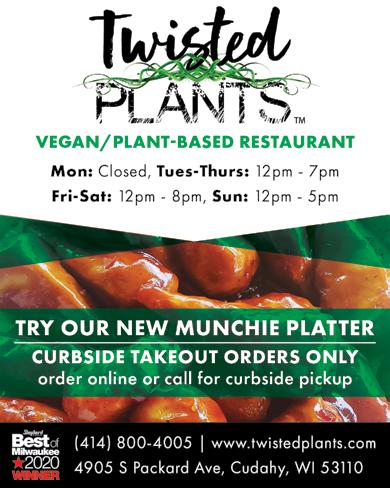
3 minute read
Slake Your Summer Thirst with Riesling
Slake Your Summer Thirst
WITH RIESLING
Advertisement
BY GAETANO MARANGELLI
You’ve dated Riesling. I know you have.
You may be with Riesling now.
When things began between the two of you, you’d say to friends, “Riesling is sweet and simple. Nice and easy.” But you weren’t taking Riesling seriously, were you? And maybe you still aren’t.

Are you?
If you aren’t, then set down your glass of froufrou Rosé—or ho-hum Pinot Grigio, Sauvignon Blanc, or Chardonnay—and listen to me.
The Riesling you know is sweet, simple and easy because that’s the kind of Riesling your neighborhood bars and wine shops serve you. While many Rieslings are sweet, more are dry or off-dry. Sweet Rieslings are simply one side of Riesling’s labyrinth character. You may slake your summer thirst with boring Sauvignon Blancs—made with factory yeasts to taste like every other Sauvignon Blanc you’ve ever tasted—dull Pinot Grigios—made with muted aromas, flavors, and acidity—and blousy, louche and lusty Chardonnays—made to taste of oak, butter, and alcohol—or you can explore the world of Riesling. You can have the same summer wines you’ve always had, or you can make the Riesling you don’t know your new wine of summer.
WINE OF MANY FACES
Riesling has an otherworldly alchemy. Like the Greek god Proteus, it has as many faces as there are kinds of nature. Riesling is light in alcohol, delicate in texture and high in fruity, natural acidity. These are the qualities that make Riesling a refreshing summer wine. And the flavors and aromas of Riesling are rich palettes of terroir—the soil, topography and climate of a wine region. These are the qualities that make Riesling magical. Begin your Riesling summer with the classical style from the north German valleys of the Mosel, Saar and Ruwer Rivers. These Rieslings are delicate and structured, refined and racy. They taste of the slate in their vineyards’ soils. Then explore the richer Riesling styles from the German regions of the Rheingau, Rheinhessen, Nahe and Pfalz. Journey to the Rieslings of the Alsace region in the east of France, which yields dry wines, with aromas and flavors of minerals and flowers. Travel to the Rielsings of the Wachau, Kremstal and Kamptal regions of Austria, which make dry, rich, round wines. And voyage to the Rieslings of the Clare and Eden Valleys in the south of Australia, which offer dry, citrusy, tropical wines.
You may have dated Riesling. You may still be with Riesling, but you don’t know Riesling yet. This summer, why not discover what Riesling really is?
Photo by Rostislav_Sedlacek/Getty Images.

AN ABRIDGED GUIDE TO QUALITY GERMAN RIESLINGS
The best place to begin your Riesling summer is with quality German Rieslings. These wines are divided into two categories: Qualitätswein and Prädikatswein.
Qualitätswein are also listed on labels and referred to as QbA. They have to originate in one district of the 13 German wine growing regions, which has to be declared on the label. They range from trocken—dry—to halbtrocken and feinherb—half dry or off-dry—to süss—sweet.
Prädikatswein are superior quality wines. They have to originate in one district of the 13 German wine growing regions and are divided into six sub-categories. These subcategories are defined by the ripeness (or must-weights) of the grapes at the time of harvest. Like Qualitätswein, they range from trocken—dry—to halbtrocken and feinherb—half dry or off-dry—to süss—sweet.
Kabinett: Made from fully ripened grapes picked at the time of normal harvest. The lightest style of Prädikatswein. Dry to half-dry.
Spätlese: Made from ripe grapes picked after the normal harvest. (Spätlese means late harvest.) A more concentrated wine, with more concentrated flavor. Often but not necessarily sweet.
Auslese: Made from very ripe, select grapes. (Auslese translates to select harvest.) High concentration, intense flavor. Usually sweet.

Gaetano Marangelli is a sommelier and playwright. He was the managing director of a wine import and distribution company in New York and beverage director for restaurants and retailers in New York and Chicago before moving to Wauwatosa.












